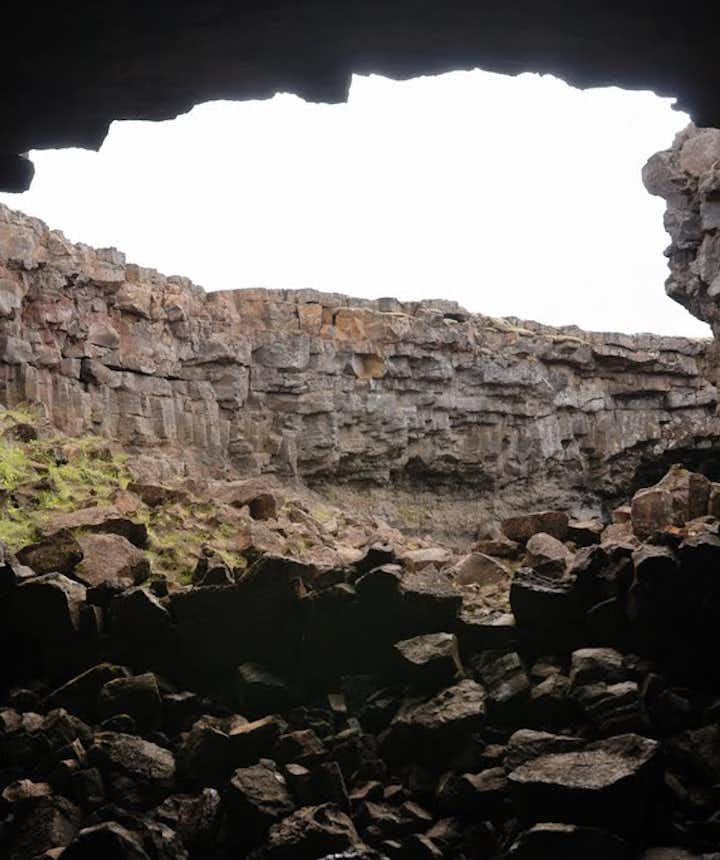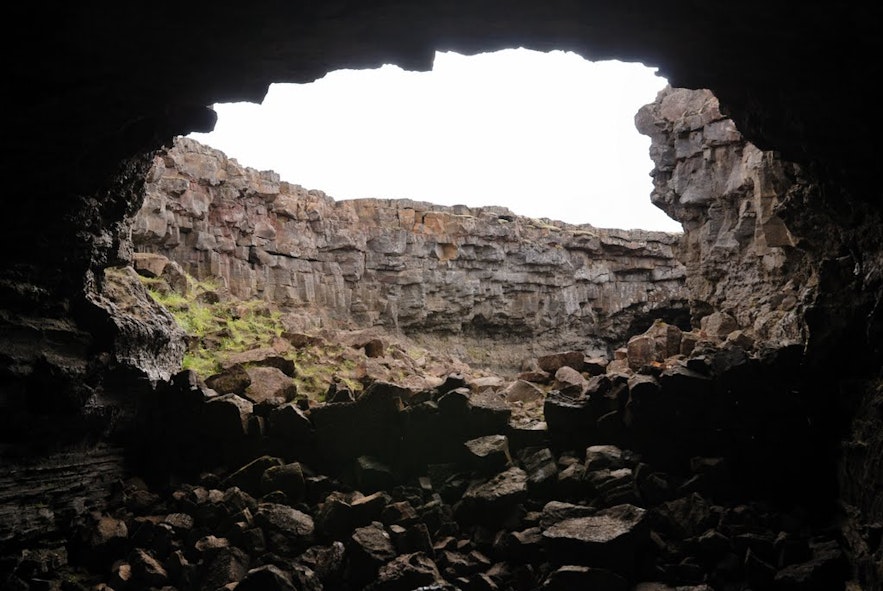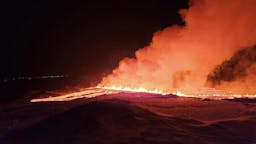
Surtshellir Cave | Den of Thieves or Temple of Doom ?
(With the kind permission of Kevin B. Smith from Brown University - lecturing Reykholt on 22nd of February 2014)
ln the 13th century text Landnámabók (Pálsson and Edwards 1972), the 14th century Harðar saga ok Hólmverja (Jónsson 1953), and the fictive 19th century Hellismanna saga (Árnason 1889) Surtshellir is identified as the base of an outlaw band that fortified the cave in the late 10th century preying on the surrounding countryside until routed by a coalition of local chieftains.
The presence of bone piles and a stone-walled structure have been anecdotally recorded since the 17th century and a single radiocarbon date was run on a Bos bone fragment in 1969 by the lcelandic author Halldór Laxness. These fragmentary records have been used in the past to suggest archaeological suppott for the historical narratives. However, the calibrated age of Laxness'date spans the entire Settlement and Commonwealth periods (AD 870-1264) and could reference activities undeftaken at any point in the early Middle Ages.
Surtshellir is one of thirty-three lcelandic caves with evidence of human occupation or activities from the time of lceland's initial Norse settlement (ca. AD 874) to the recent past. Seven are known within the Hallmundarhraun; two of these had received some archaeological attention prior to these investigations (Gestsson 1960; Ólafsson 2000).
Fieldwork in Surtshellir therefore provided opportunities to determine whether the cave's archaeological deposits could be dated to the Settlement period, to inventory and characterize the archaeological features and deposits within it, possibly togain new insight into outlaws'material culture and their impacts on the regional economy, and to contribute data from the North Atlantic to the study of caves in archeological record.
Surtshellir is an unusual Viking Age lcelandic site. Place names within the cave, coupled with the documented archaeological features and deposits, suggest a relatively extensive and complex suite of archaeological remains including fortifications, a subterranean house, middens, and extremely thin and fragile occupation deposits. The main habitation zone is located c. 200 meters from the cave's entrance, well beyond the penetration of any natural light. Separated from the entrance passages by a massive fortification wall in a hidden side passage, it was obviously not meant to be an accessible place. The thickness of the midden layer shows that it accumulated over some time. AMS dates confirm a late 11.th or 1O.th century age for the bonebearing deposits, while the form of the adjacent structure bears many similarities to known Viking Age halls.
please notice!! Because of risk of stones falling down from the roof, Surtshellir should not be visited without a local guide and always with proper safety equipment.
For more information visit Snorrastofa or see West Iceland.
其他有意思的博客
冰岛最浪漫的角落
对于很多人,遥远的冰岛有着世界尽头的神秘,有着区别于巴黎、马尔代夫、自成一体的浪漫。没有埃菲尔铁塔和蒂凡尼,没有热带沙滩,而是在冰川、火山、苔藓地的背景下蜜月旅拍、婚拍,甚至举办一场冰岛婚礼。来冰岛旅行,多是要跨千山万水、飞跃大洋大陆,很有一点“万水千山陪你走过”的史诗感。难怪很多人说,光是冰岛二字,就足够浪漫了。 冰岛虽然不大,但是地貌极其丰富,不同的自然景观自然有不同的气质。这一篇,就挑阅读更多从极光观测到摄影-到底该不该来冰岛看极光
很多朋友都想来冰岛看极光,但是冰岛到底适不适合看极光呢?几月、什么季节能看到极光?是不是一定要参加北极光旅行团?如何能拍摄出美丽的极光照片呢?在冰岛住了好几年了,从刚开始逢极光必出门,到如今家里阳台就能看极光,我对在冰岛看极光的了解和经验,也算得上大半个专家了,且听我娓娓道来吧。 到底该不该来冰岛看极光呢?最坦诚的答案是,不要只为了看极光而看极光。 极光原理 太阳活动→太阅读更多
迷失冰岛的米湖游览推荐|不只有温泉的地热宝藏区
我在冬夏秋均到访过米湖,看过米湖的不同面。一直以来,米湖到底值不值得去是很多游客争论的问题。有些人觉得这里是来冰岛旅行的必去目的地,有些人则说米湖“太丑了”,连照片都不想多拍几张。那米湖到底值不值得来呢?到底怎么玩呢? 米湖的风景 北部的米湖,因地理位置相距首都雷克雅未克略远,很多来冰岛的短途游客选择放弃,其实米湖应该是和黄金圈、南岸沿线至冰湖齐名的冰岛景色,这里冷热相融,可谓最冰岛,尤其阅读更多

将冰岛最大的旅行平台下载到您的手机中,一站式管理您的整个行程
使用手机摄像头扫描此二维码,然后点击显示的链接,将冰岛最大的旅行平台添加到您的手机中。输入您的电话号码或电子邮件地址,以接收包含下载链接的短信或电子邮件。



















